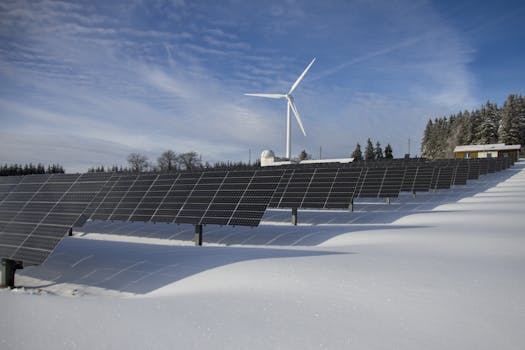Introduction to Amorphous Photovoltaic Panels
Amorphous photovoltaic (a-Si) panels represent a unique segment of solar technology, distinguished by their non-crystalline silicon structure. Unlike traditional crystalline silicon panels, a-Si panels are made from a thin layer of silicon, which allows for flexibility and lightweight designs. This article delves into the advantages, pricing, and performance of amorphous photovoltaic panels over time, providing a comprehensive overview for potential users and investors.
Advantages of Amorphous Photovoltaic Panels
Amorphous photovoltaic panels offer several advantages that make them an attractive option for various applications. Here are some key benefits:
- Flexibility and Lightweight: The thin-film nature of a-Si panels allows them to be integrated into a variety of surfaces, including curved or irregular shapes. This flexibility makes them ideal for applications where traditional panels may not fit.
- Lower Production Costs: The manufacturing process for a-Si panels is generally less expensive than that for crystalline panels. This cost-effectiveness can lead to lower prices for consumers.
- Performance in Low Light Conditions: Amorphous panels perform better in low light and high-temperature conditions compared to their crystalline counterparts. This characteristic makes them suitable for regions with less sunlight or during cloudy days.
- Reduced Land Use: Due to their efficiency in low light, a-Si panels can be installed in smaller areas, making them a viable option for urban environments where space is limited.
Pricing of Amorphous Photovoltaic Panels
The cost of amorphous photovoltaic panels has been a significant factor in their adoption. As of 2023, the average price for a-Si panels ranges from $0.50 to $1.00 per watt, depending on the manufacturer and specific technology used. This pricing is competitive when compared to traditional crystalline silicon panels, which can range from $0.70 to $1.50 per watt.
Several factors influence the pricing of a-Si panels:
- Manufacturing Scale: As production scales up, the cost per watt tends to decrease, making a-Si panels more affordable.
- Technological Advancements: Innovations in manufacturing processes can lead to cost reductions, further enhancing the competitiveness of a-Si panels.
- Market Demand: Fluctuations in demand for solar technology can impact prices, with increased interest in renewable energy driving costs down.
Performance Over Time
One of the critical considerations for any solar technology is its performance over time. Amorphous photovoltaic panels have a unique degradation profile compared to crystalline panels. While a-Si panels typically have a lower initial efficiency (around 6-10%), they exhibit a slower degradation rate, which can be advantageous in the long run.
Key points regarding the performance of a-Si panels include:
- Degradation Rate: Amorphous panels generally experience a rapid initial drop in efficiency, known as the “light-induced degradation,” but stabilize after the first few months. This can lead to a more consistent performance over the lifespan of the panel.
- Longevity: With proper maintenance, a-Si panels can last 20-30 years, although their efficiency may be lower than that of crystalline panels over time.
- Real-World Case Studies: Projects such as the Solar Park in Germany have demonstrated the viability of a-Si technology, achieving satisfactory energy outputs even in less-than-ideal weather conditions.
Conclusion
Amorphous photovoltaic panels present a compelling option for those looking to invest in solar technology. Their unique advantages, including flexibility, lower costs, and better performance in low light, make them suitable for a variety of applications. While their initial efficiency may be lower than that of crystalline panels, their slower degradation and competitive pricing can offer long-term benefits.
As the solar market continues to evolve, amorphous photovoltaic panels are likely to play an essential role in diversifying energy solutions, particularly in urban settings and areas with limited space. Understanding the advantages, pricing, and performance of these panels can help consumers make informed decisions in their pursuit of renewable energy.
